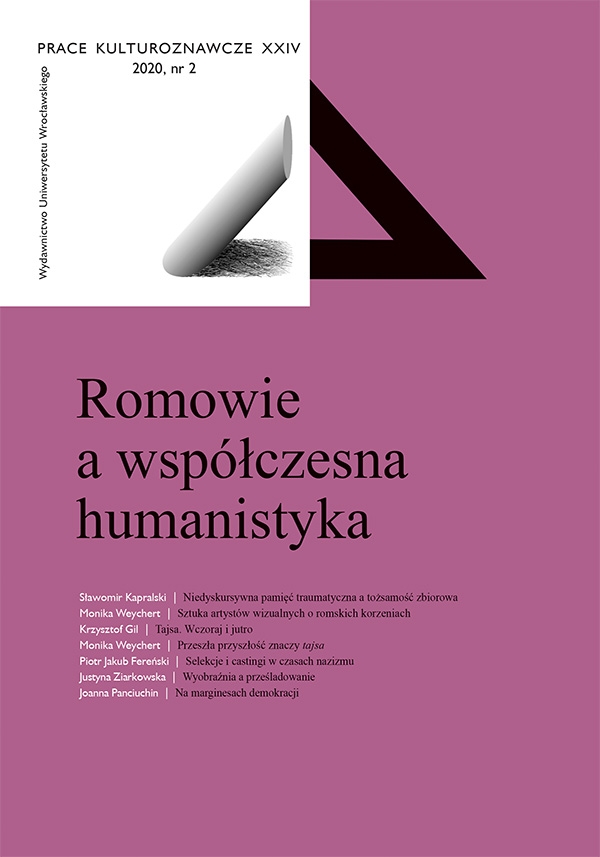

Articles

The article presents Roma non-discursive memory that is the presence of the past, not expressed in speech or writing, but existing in practices, relations, social structures, and cultural hierarchies. This form of memory plays a particularly important role for Roma — a network of groups which in the past found it difficult to access the means of production of collective memory. The author draws upon system theory and symbolic anthropology of Mary Douglas to show how the anxieties caused by traumatic historical events, involving the violation of the external boundaries of the Roma community, are non-discursively encoded in its social structure and culture. In consequence, the author argues that the impossibility of protecting the external boundary (for example of an efficient defense against persecution) leads to a compensating control of intra-group boundaries — for example to the strengthening of the patriarchal relations between men and women. This claim is evidenced by the different status of women in the otherwise culturally similar groups of Polish Carpathian Roma and Slovak Roma which the author explains by different experiences of the World War Two which characterize these two groups and their different forms of non-discursive memory.